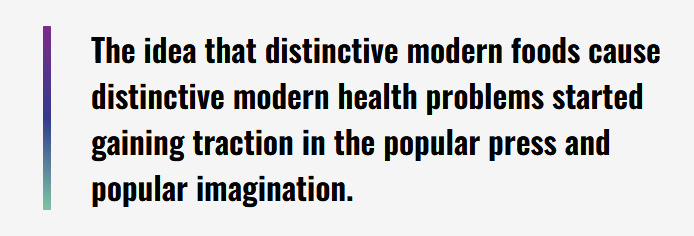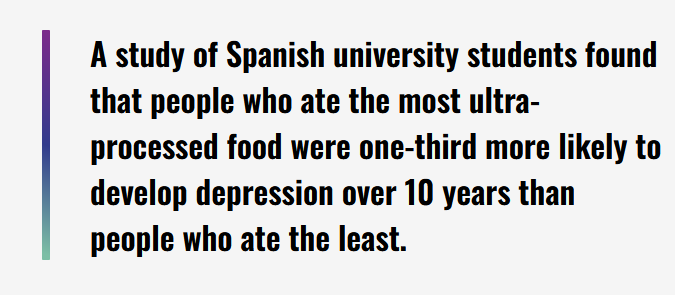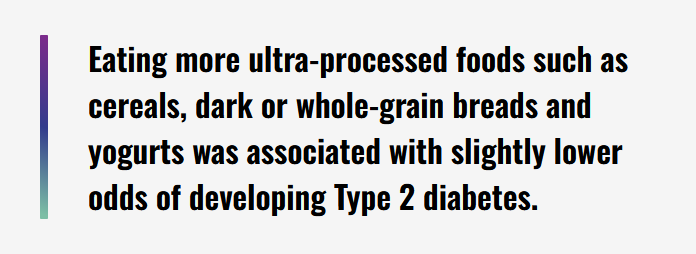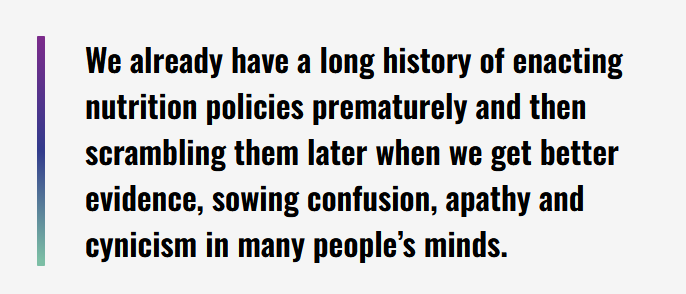
Ultra-processed foods often contain artificial colors and unnatural shapes—but that doesn't mean the whole category is unhealthy. Credit: Alamy
After decades of searching, many scientists believe they have finally pinned down the main problem with our modern diets—the factor driving ever-escalating rates of obesity, diabetes, heart disease and any number of other serious chronic conditions.
The culprit isn’t saturated fats, trans fats or some new killer fat you
haven’t of. It’s not cholesterol, carbs or sugars; dairy, gluten or meat. It
isn’t a specific thing at all.
The problem, according to this increasingly popular argument, is that we’re eating lots of ultra-processed food or UPF. Traditionally, people used limited processing techniques such as cooking and pickling to preserve food or to make it more pleasant to eat.
Modern food companies transform food much more extensively through
techniques such as extrusion and molding, adding lab-derived components
including flavorings, emulsifiers and preservatives. They use this additional
processing to make foods that are cheaper, longer-lasting and more convenient.
“There’s a long, formal scientific definition, but it can be boiled down to this: If it’s wrapped in plastic and has at least one ingredient that you wouldn’t find in your kitchen, it’s UPF,” writes author and infectious disease doctor Chris van Tulleken in his recent, widely praised book, Ultra-Processed People: The Science Behind Food That Isn’t Food.
These ultra-processed foods have come to represent a major part of people’s diets—a large majority in countries such as the United States, the United Kingdom and Canada. “We’ve started eating substances constructed from novel molecules and using processes never previously encountered in our evolutionary history, substances that can’t really even be called ‘food.’”
Many researchers and nutritionists say this shift has been a costly one. They point to a series of studies suggesting that ultra-processed food is a major driver of obesity, heart disease, cancer and even neurodegenerative conditions like Alzheimer’s. As the scientific evidence accumulates, some countries have responded by adopting public health policies to try to decrease the amount of ultra-processed food that people eat.
The message has entered the popular media in increasingly alarming reports.
“Ultra-processed food isn't just bad for your health—it messes with your
mind,” reported National Geographic in November. “What makes
ultra-processed foods so bad for your health?” probed The Economist in August.
Although there is good research raising concerns about ultra-processed food, we should be hesitant to declare it the primary scourge of the modern diet. The case against ultra-processed food isn’t as solid as the headlines and public outcry would lead us to believe. The research connecting these processed foods to health problems has limitations, and there is contradictory evidence as well.
This is a classic example of how research doesn’t speak for itself: It must always be interpreted, by people, in the context of other, often conflicting evidence. “Are there really studies that show that ultra-processed foods are unhealthy? It’s pushing very weak data to make a case,” says Gunter Kuhnle, a nutrition researcher at the University of Reading.
The field of nutrition has a long history of overreacting to contemporary
research trends, and we risk making the same mistake now with processing.
“We’ve had that issue in the past, as with low-fat recommendations” that later
turned out to be counterproductive, says Duane Mellor, a dietitian at Aston
University in England.
“We’ve messed up too many times. We need to make smarter changes more
carefully.” The evidence on ultra-processed food, as is often the case in
science, refuses to yield simple, black-or-white answers.

The term “ultra-processed food” was
introduced 15 years ago, when University of São Paulo physician, epidemiologist and
nutritionist Carlos Monteiro published a short commentary in the journal Public Health
Nutrition arguing that industrial foods were “hardly compatible with
survival,” and that “diets that include a lot of ultra-processed foods are
intrinsically nutritionally unbalanced and intrinsically harmful to
health."
Monteiro concluded by recommending the adoption of policies like those used to make alcohol and tobacco more expensive and less accessible. He and several colleagues soon created a food-categorization system called NOVA, with unprocessed or minimally processed food in group 1 and ultra-processed foods in group 3. (The system was later expanded to four groups.)
UPFs were said to include a wide range of sweet, salty and fast foods such
as soft drinks, chicken nuggets, ice cream, chips and cookies. It also
encompassed products not usually thought of as junk food but made for
convenience or with ingredients that are not used in home cooking, such as
fruit yogurt, sliced bread, infant formula and breakfast cereal with low levels
of added sugar.
Other researchers began using the NOVA categorization system to examine the potential health effects of ultra-processed food, comparing people who ate lots of ultra-processed food with those who ate more natural fare. A series of these studies found that UPFs were consistently associated with worse health outcomes.
A 2011 study in Guatemala found higher body-mass index and
rates of obesity among people who ate more highly processed foods—a 10
percentage point increase in consumption of processed food translated to a 4.3%
increase in BMI. A 2019 study of a group in the U.S. found a connection
between eating ultra-processed food and experiencing metabolic disturbances
such as high blood sugar and high blood pressure, conditions that increase the
risk of obesity, diabetes and heart disease.
As more studies emerged, the idea that distinctive modern foods cause
distinctive modern health problems started gaining traction in the popular
press and popular imagination—and among many physicians as well. “Ultra-processed
food feeds into this idea that everything was better in the past,” Kuhnle
states. “On one side, you have the farmer going in the field. On the other
side, you have smoking factories. And you can add that there is sort of this
general distrust in people of science, of industry, of government.”
But there is one key, well-known limitation of this kind of retrospective research: Correlation does not prove causation. In these studies, people who ate lots of ultra-processed food were usually in worse health—not much worse, as in the case of smoking, but somewhat worse. That could be interpreted to mean that ultra-processed foods cause health problems, but there are other factors, or confounders, that could also explain the correlation.
People who eat lots of processed food might have unhealthier lifestyles overall, which could explain why they have worse outcomes. People who listen to public health advice about eating fresh foods might also choose to walk up stairs rather than use the elevator, an increase in physical activity that might well not show up in research surveys. Researchers try to correct for these confounders, but different categories of people are too complicated to be perfectly statistically measured and compared.

Observational studies are also prone to an
issue called reverse causality: Did diet soda make people gain weight,
or did overweight people who wanted to shed some pounds start drinking diet
soda? What’s more, there are major questions about how well people remember
what they eat and therefore how accurately they can report it in observational
studies.
Some researchers say this kind of evidence doesn’t merit the boldface
attention it often gets. “How this stuff gets published in The New
England Journal of Medicine,” says psychologist and food researcher Peter Rogers, “that’s strange to me. That
we’re not more concerned about the level of evidence.”
Some researchers have tried to get a better look at ultra-processed foods by running prospective studies, meaning that they gather a group of subjects, monitor their eating habits and lifestyles for some period, and compare their diets with their health outcomes, trying to correct for other factors besides diet.
A 2019 French study that followed people for about seven years found that those who ate more ultra-processed food had a higher risk of mortality. For each 10% increase in the amount of UPF eaten, there was a 14% increase in the number of deaths, about half of which came from cancer and cardiovascular disease.
A study of Spanish university students in the same year found that people who ate the most ultra-processed food were one-third more likely to develop depression over 10 years than people who ate the least.
Prospective studies can show how people change over time and help reduce the problems of reverse causality and poorly measured diets, but they don’t eliminate the core entanglement: People who follow the well-known advice to eat fresh foods are likely different in many complicated ways from those who hit the drive-thru.
The great majority of the evidence against ultra-processed food is of a
circumstantial variety. However, policymakers in a few countries decided the
evidence was solid enough and began enacting measures to steer citizens away from
UPF.
“Ultra-processed foods and cardiometabolic health: public health policies to
reduce consumption cannot wait,” wrote a
group of researchers in the British Medical Journal recently.
There is one influential study that has gone beyond observational research to provide more concrete proof of how ultra-processed food affects people.
In 2019, NIH researcher Kevin Hall and a group of colleagues published a paper based on an experiment in which they kept 20 subjects in a hospital setting, giving half of them a UPF-heavy diet for two weeks followed by a diet based on minimal processing for two weeks, allowing them to eat as much food as they wanted at each meal. The other half had the diet with minimal processing first.
The researchers carefully arranged the two diets to be equivalent in terms of nutrients, energy density fiber and other attributes; they differed only in the percentage of processing. While subjects were on the ultra-processed food diet, they ate about 500 more calories per day, and in just two weeks they gained 2 pounds.
During the time they ate fresh foods, they lost 2 pounds. Finally, there was direct evidence that ultra-processed foods could push people toward obesity.
One paper, however, does not settle a complicated field. “It’s a very well-conducted study,” says Kuhnle. “But like all studies, there are limitations." For instance, the ultra-processed foods in the study didn’t have much fiber, so the researchers also gave people fiber supplements dissolved in water, but that may not be equivalent to eating fiber.
Moreover, no single, small experiment could ever settle such a big
nutritional question. “I’ve done studies of flavonols (compounds found in
fruit, but also used in processing) with 20 or 50 people," Kuhnle says.
“The response was always, ‘That’s a single study.’ We need more studies to
understand this.”
Hall readily acknowledges that this single, small study doesn’t provide a final verdict on ultra-processed food, partly because it didn’t represent real life. “It’s a very artificial environment, where we can completely take control over their food,” he says. He also points out that we can’t extrapolate life-long effects based on two weeks of data. “Of course, that (level of overeating) wouldn’t last forever,” he says.

Hall, like many other researchers, says the
pressing question is to find what exactly is wrong with processed foods—that
is, to identify the mechanism by which they seem to impact human health. He has
reanalyzed the data from the 2019 study and found some support for specific
hypotheses that other researchers have advanced.
Perhaps the problem with ultra-processed food is its energy density; or its texture, which may encourage people to eat too fast; or its alleged “hyper-palatability,” which is defined by specific combinations of sugar, salt and fat.
Hall and his colleagues are now running a second, similar diet trial to try
to both replicate the original finding and also to see if any of these
hypotheses are borne out by the experiment. This kind of study is costly and
takes about two years to run, in addition to the preparation and
analysis.
Another challenge is that not all ultra-processed foods are alike. In many cases, they are not more energy-dense than whole foods. Fruit yogurt is generally less energy-dense than a homemade cookie, for instance, largely because the yogurt has more water.
This is part of the problem with the concept of UPF. Frozen and canned vegetables are often classified as ultra-processed, but they are in general healthier than cookies and other homemade, carb-rich foods.
For many researchers, the ultra-processed food puzzle is not so puzzling. The problem with processed foods, they say, is well explained by guidance that mainstream nutritionists have been flogging for years.
“A lot of ultra-processed foods have
high salt, fat and sugar levels,” says Kuhnle. “For most ultra-processed foods,
we don’t really need the label. It’s already what we’d call junk food.”
Some recent research suggests that although there are junky, unhealthful types of ultra-processed food, there are other subcategories that aren’t so bad or that might even provide a benefit.
A prospective study of about 200,000 people published in
February 2023, found that eating more ultra-processed foods such as cereals,
dark or whole-grain breads, yogurts and dairy desserts was associated with
slightly lower odds of developing Type 2 diabetes.
Another prospective study of about 270,000 people published
in November 2023 found that people who ate more ultra-processed breads and
cereals and plant-based meat alternatives had the same or slightly lower rates
of multimorbidity (having two or more serious health conditions) than did those
who ate less of them.
These studies are prone to the same kinds of confounders as other epidemiological research. It’s possible that people who have cereal for breakfast may live healthier lives in other, hard-to-measure ways.
Still, they raise the question of whether ultra-processed foods comprise a monolithic category that should all be treated the same way, no matter what. When it comes to making real-life decisions about food, many nutrition experts draw lines between different types of ultra-processed food.
“Soft drinks are banned in my house,” says Heinz Freisling, the senior author of the multimorbidity study. “But my daughter likes this cereal stuff. She eats it. I think it is possible that it can be part of a healthy diet.”
When Kevin Hall spends a day in his office, he usually brings in
microwavable frozen lunches, even though they often contains additives to
preserve flavors and textures through freezing and reheating. “It has lots of
protein, lots of fiber, lots of legumes,” he says. “It’s an ultra-processed
meal, but I think it’s healthy.”
These legitimate distinctions have sometimes gotten lost in a trend of blaming health problems on the ultra-processed food bogeyman. “I think it’s a fashion. I see it in the titles: ultra-processed food is connected with cancer or heart disease,” says Francesco Visioli, who does research on food chemistry at the University of Padova.
“I disagree with following the fashion, I disagree with riding the wave. In five years, people will say, ‘Whoa, slow down.’ Progress has to be slow.”

Concern over the reputed effects of
ultra-processed foods has led to a well-intentioned yet possibly misguided push
to do something forcefully and quickly about the issue.
The dash to improve our health by condemning a new dietary villain should
set off alarms: We already have a long history of enacting nutrition policies
prematurely and then scrambling them later when we get better evidence, sowing
confusion, apathy and cynicism in many people’s minds.
The research on ultra-processed food is picking up on something important, but it’s not clear that the category called “ultra-processed food” brings us closer to understanding the problem or ameliorating it.
Some of those highly processed foods,
such as sugary drinks and processed meats, can degrade health—but we’ve known
that for years, through other nutrition research. Most people have gotten the
message that they should be eating healthier fresh foods that they prepared
themselves, rather than unnatural stuff that comes out of a sealed bag bearing
a long list of unpronounceable ingredients. To little avail.
In many countries, most of what people eat fits in NOVA’s "UPF" category. It is folly to go to war with the majority of our food; it's also costly, unproductive and unfair to people without the means to buy and prepare fresh foods.
“I don’t think I can overemphasize this. You might think ultra-processed
foods are causing the problem, but ultra-processed food makes up 60% of the
food supply,” says Kevin Hall, the researcher who provided the most widely
touted evidence against ultra-processed foods. “It’s not like cigarettes and
cancer, where nobody needs to smoke, and you could just ban cigarettes. People
need to eat food. You can’t just ban 60% of the food supply, and you can’t just
tax 60% of the food supply.”
Duane Mellor, a dietitian at Aston University in England, adds that policies
against ultra-processed foods could backfire if they push people away from
processed “gateway products” that help people to prepare healthy, mostly
natural meals, such as shelf-stable salad dressings and soup-stock cubes.
We already have some good evidence about which foods are particularly bad, and further research will teach us more.
The main goal for us now is to figure out how to make it easier for people to choose healthier options and avoid the true junk, a challenge that’s the same whether we call it “ultra-processed” or not. The better-processed foods can and should play a key role in replacing the dangerous stuff.
“I think there probably is a large set of healthy, ultra-processed foods
that are already on the market,” says Hall. “We should make more of those, and
increase the availability of those.”
___
The article was originally published on OpenMind and is republished under the Creative Commons license.
